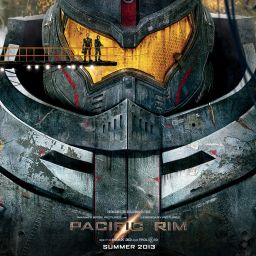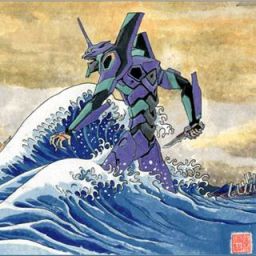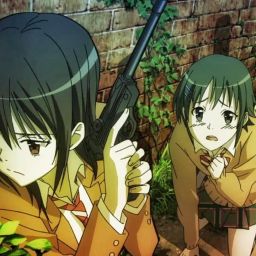by K. Hopson
I’ve got an oldie-but-goodie for you guys this month—“Mushishi”!
cue dramatic intro music
No, really. This show is one of those rare gems of masterful storytelling that you only see every now again these days, what with all this random camp strewn about. It’s an adaptation of a manga by Yuki Urushibara that made it on the scene back in 2005, but the second season, “Mushishi: Zoku Shou”, was finally released around this time last year after nearly a decade. A second live-action movie is expected in the summer this year, as well. I haven’t seen the first movie yet, so I’ll definitely be checking out that and the manga.
As you may have deduced from the title, the series is about supernatural beings called mushi that exist between the physical and sprit world. Obviously some people can’t see them since they don’t quite exist. They do have some level of influence, however, and can cause all sorts of disaster and mischief in the human world. The audience follows Ginko, a traveler of unknown origin, across ancient Japan as he mushi-wrangles and mediates bad situations. (Actually, I’m not sure if it’s ancient Japan or not because Ginko wears pretty modern clothes while everyone else wears kimono.)
Sounds simple enough. The writing is good enough that this formula does not get boring despite the fact that both seasons combined are more than 40 episodes. Mushi are always woven into each story in a new an interesting way.
After watching couple of episodes of “Mushishi” with friends, they described the show with words like “quaint”, “delicate” and “quiet”. These are accurate descriptions, although I would probably say that the series is just…beautifully subtle in its presentation of thought-provoking situations and ideas. By the end of the end of each episode, I feel like I’ve absorbed an important moral or been introduced to a new perspective. The animation, while somewhat plain, suits the style to a T—mostly earth tones with thicker linage and no super-dewy eyes.
I don’t mean to say that the show shoves its ideas down your throat in a “Sailor Moon Says” kinda way. Rather, it guides you to think. About…things. Emotional, spiritual, and existential things. When’s the last time an anime did that for you without sledgehammering you in the face? (I’m looking at you, “C”.) When you take a break from marathoning a season, you may find that you’re still thinking about what you saw. Every episode is haunting. In a way, it makes me think of another old favorite of mine, “Natsume’s Book of Friends”. Neither series has any production staff in common that I know of, but they have a similar atmosphere.
Besides the giant gap in release dates, consistency and quality are not an issue here. The second season is just as well-written as the second. I personally found that there were more memorable episodes in the second season, though. The good thing about episodic shows is you could probably watch them in any order and not really miss out on anything.
And speaking of haunting, I must commend this series again—it’s the perfect blend of slice-of-life-style drama and supernatural without being outright horror. A lot episodes are horrifying, absolutely. But there’s probably an equal amount of episodes that will make you cry like your mom asked you to go pick a suitable switch off a tree. Shoutout to everyone who experienced corporal punishment as a child. My favorite eps are: “Inside the Cage”, “Cotton Changeling”, (Spoiler: Beware of Children of the Corn types) “Floral Delusion”, and “Lingering Crimson”.
If anyone was able to get through both seasons without crying, you are required to post a comment.





